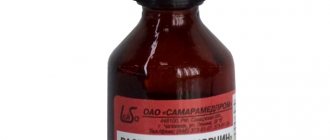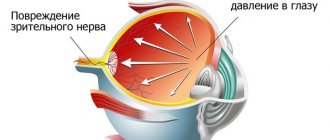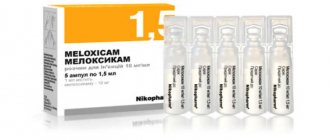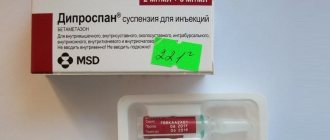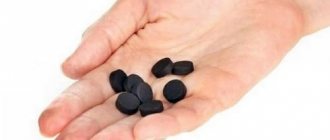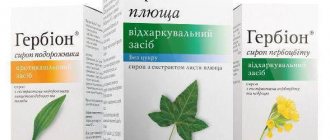Lidocaine and Cefazolin are intended for intramuscular administration. If you mix an antibiotic with water, the injections can cause pain. The anesthetic helps prevent the occurrence of an unpleasant symptom. This combination is used to treat infections caused by pathogens sensitive to Cefazolin.
Lidocaine and Cefazolin are intended for intramuscular administration.
Side effects
Most drugs can cause side effects. There are no substances that are ideal for all patients. Some people experience individual intolerance. Among the undesirable effects that may occur after using Cefazolin are:
- Various types of allergies;
- Rash;
- Itching of the skin;
- Shock conditions;
- Steven-Johnson syndrome;
- Quincke's edema;
- Arthralgia;
- Convulsions;
- Nausea;
- Vomit;
- Leukopenia;
- Pain when administering the drug;
- Gastrointestinal disorders;
- Hepatitis;
- Diarrhea;
- Thrombocytopenia;
- Kidney failure;
- Pain syndrome in the abdominal area;
- Cholestatic jaundice;
- Bronchospasm;
Reading the instructions
Instructions for using cefazolin are included in each package. It is generally intended for a doctor, but it is worth reading even if you do not have a medical education.
The list of side effects of cephalosporins is not small, and you should be aware of them. If allergic reactions and gastric disorders occur, you should immediately consult a doctor and decide on the further advisability of use.
Allergic reaction
It is not recommended to interrupt the course of treatment with cefazolin, since pathogenic bacteria are able to adapt to low doses of the drug, and repeated use of cefazolin simply will not help. This phenomenon is called sensitization.
How to dilute Cefazolin with lidocaine or novocaine
Previously, the antibiotic was dissolved in novocaine (0.25 or 0.5% solution), at the rate of 5 ml per 1 gram of powder. However, today it is recommended to use another anesthetic for this purpose - lidocaine, which is more suitable as a solvent for parenteral antibacterial agents.
To carry out the manipulation, you will need a bottle of the drug in the dosage prescribed by the doctor, an ampoule of 10 ml of lidocaine solution (1%) and a pair of disposable syringes. The sequence of actions looks like this:
- Open the ampoule with anesthetic and remove the central part of the metal cap from the bottle with powder.
Draw 3.5 ml of lidocaine solution into a sterile syringe, insert the needle into the bottle with the antibiotic (directly into the rubber stopper) and pour out the anesthetic. Without removing the needle, shake the mixture vigorously until it becomes homogeneous. Take the liquid back into the syringe, disconnect it from the needle and put another, sterile one on it to perform the injection. There should be no air bubbles inside.
If a dilution is made into 2 injections (for example, in a bottle there is 1000 mg of the active substance, and a single dose is 500), then 5 ml of lidocaine is taken, 2.5 ml of the resulting solution is used for injection, and the rest is stored in the refrigerator until the next time.
What to buy at the pharmacy
You cannot buy cefazolin without a prescription. Even if you definitely assume that the doctor will definitely prescribe it for you. Therefore, before you go to the pharmacy, call the doctor.
According to the prescription, the pharmacist will give you not only the drug itself, but also syringes and a means for diluting the dry substance. Typically, a 0.5% - 2% solution of novocaine is used for this purpose. Some parents purchase lidocaine for purulent tonsillitis in children. This is wrong, because... the use of lidocaine for dilution can cause complications from the heart.
When purchasing any medications, do not forget to pay attention to the expiration dates of the medications.
Analogs
Cefazolin Sandoz
Sandoz Gmbh, GermanyPrice about 70 rubles.
The main difference between Sandoz and regular Cefazolin or Cefazolin-AKOS is that it is made in Germany. In everything else - composition, indications and contraindications, side effects - these injections make no difference. The drug is available in the form of the same white powder, but in a different package. Only its price is higher, which is not the case with its domestic analogue.
Also, according to patient reviews, Cefazolin Sandoz is very painful to administer, so it is recommended to dilute it with novocaine or lidocaine.
Pros:
- Made in Germany
- Available in literally all pharmacies.
Minuses:
- Higher price
- "Painful" injections.
Ceftriaxone
LECCO, RussiaPrice about 30 rubles.
Ceftriaxone is a drug that is used for the same diseases listed above and is also administered intravenously or intramuscularly. The main difference between Ceftriaxone and Cefazolin is its active substance ceftriaxone, which in its action is in no way different from cefazolin
Ceftriaxone can also be administered and injected into children, adults, and pregnant women with caution. Ceftriaxone also treats inflammatory infections, but not sore throats and colds, and the same side effects may occur when administered.
And patients who took Ceftriaxone claim that it is stronger than Cefazolin.
Pros:
- Price
- More powerful action.
Minuses:
- Shelf life – 2 years
- Reduced blood pressure, stress on the heart.
Cefotaxime
ROMED EXPORTS, IndiaPrice about 30 rubles.
Cefotaxime is another drug with the same indications for use. The main difference between Cefotaxime and its analogues is the active ingredient cefotaxime, otherwise it is similar to previous drugs. Also, Cefotaxime should not be injected intramuscularly into children under 2.5 years of age.
Patients responded mostly well to the drug; many were pleased that the treatment was quick and without allergic reactions.
Pros:
- Rapid improvement of the patient's condition
- In most cases, there is no allergic reaction to the drug.
Minuses:
- Shorter shelf life – two years
- During pregnancy and under the age of 2.5 years, Cefotaxime is strictly prohibited.
Sulbactomax
Mili Healthcare Ltd, UK Price about 270 rubles.
Sulbactomax is another analogue of Cefazolin, which is also a powder for dilution. The drug was recently developed and is considered an innovative antibiotic due to the fact that it contains two active ingredients: 1000 mg of ceftriaxone and 500 mg of sulbactam. Thus, thanks to this, it is effective against infections of soft tissues, lower respiratory tract, meningitis and gonorrhea. Available for children. But there is also a bad side to innovation - this is a greater number of possible side effects, including exanthema, shortness of breath, jaundice, etc.
Pros:
- Treats a larger number of diseases (meningitis, gonorrhea, etc.)
- Available for children from infancy.
Minuses:
- More side effects
- Higher price.
Pharmacodynamics and pharmacokinetics
The pharmacological effect of the drug is based on blocking the biosynthesis of microbial cell walls. The antibiotic Cefazolin is active against gram-positive (Streptococcus spp., Staphylococcus spp.) and gram-negative bacteria (Klebsiella spp., Escherichia coli, Treponema spp., Haemophilus influenzae, Proteus mirabilis, Neisseria gonorrhoeae, Enterobacter aerogenes).
The drug is poorly absorbed from the gastrointestinal tract when used internally, therefore it is used for intravenous and intramuscular injections. After intramuscular injections at a dosage of 0.5 g, the maximum concentration is observed after 1-2 hours. Plasma protein binding is approximately 85%.
The active substance of the drug penetrates bone tissue, as well as pleural, ascitic and synovial fluid, but is not detected in the nervous system.
The half-life of the drug is approximately 1.8 hours. The drug is excreted unchanged in the urine.
With intramuscular injections, about 80% of the dose is eliminated after 24 hours. In case of renal dysfunction, the plasma half-life increases.
Cefazolin use during pregnancy
Pregnancy is a difficult period in a woman’s life, therefore, if any deviations in health occur, treatment should be selected with special care. Do not use this medication on your own under any circumstances. During this delicate period, any improper medical intervention can interfere with the proper development of the fetus.
The dosage depends on the patient’s disease and stage. The main condition is that the portion of intramuscular or intravenous administration should not be less than 500 mg and not exceed 1 g twice a day. Reducing the portion will nullify the effect; a volume of less than 500 mg has virtually no effect on pathogens.
Any medical intervention most clearly affects the embryo in the first trimester of pregnancy. Therefore, it is advisable to avoid the use of Cefazolin during this period.
Indications for use
In what cases is Cefazolin prescribed:
- inflammation of the inner lining of the heart wall (endocardium);
- infection on skin areas affected by burns, wounds, or surgery;
- severe inflammation of the peritoneum (sepsis, peritonitis);
- infectious inflammatory process in the respiratory tract (sore throat, bronchitis) and sinuses;
- diseases of the urinary system caused by infection;
- joint defects (arthritis, osteomyelitis) caused by pathogens sensitive to cefazolin;
- prevention of complications after surgery.
Overdose
An overdose after improper use of the antibiotic Cefazolin (Cefazolin-AKOS) is acceptable and is manifested by a number of symptoms, such as:
- Involuntary muscle contractions
- Convulsive syndrome
- Headache
- Dizziness
- Paresthesia
- Sudden heart rhythm disturbances
- Vomit.
Treatment for these symptoms is as follows: firstly, you need to immediately stop giving injections with the medicine, and secondly, if the symptoms bother the patient too much, he needs to start taking medications that can eliminate them. It has been noticed that the body itself contributes to the removal of the antibiotic - in case of an overdose, hemodialysis is accelerated, which contributes to the speedy completion of the entire process. Well, if the case is very severe, then hospitalization occurs and mechanical blood purification is used - dialysis.
Cefazolin during pregnancy (and lactation)
When Cefazolin is used during pregnancy, it has almost no negative effect on the fetus and the woman’s health. However, it should be prescribed only under the supervision of a specialist. It is dangerous to use Cefazolin during pregnancy and lactation without medical supervision.
During pregnancy, the drug is prescribed only for health reasons. For nursing mothers, cefazolin is one of the safest antibiotics; it is poorly absorbed orally and does not actually pass into breast milk.[1]
Side effects
After using this drug, some of the following side effects may occur:
- Abdominal pain
- Nausea
- Vomit
- Diarrhea, diarrhea
- Glossitis
- Heartburn
- Loss of appetite
- Violation of the functional activity of the kidneys
- Candidiasis.
For information on how to quickly eliminate heartburn, read the article: heartburn.
Also, some patients feel pain after antibiotic injections and notice a lump at the site of the intramuscular injection, which is actually nothing serious. Various allergic reactions to Cefazolin (Cefazolin-AKOS) were also recorded, including: urticaria, anaphylactic shock, vascular pain, skin rashes and itching in various places, feverish conditions, an increase in the volume of eosinophilic leukocytes and Quincke's edema.
Quite rarely, but still there were side effects directly related to the circulatory system - a decrease in the number of platelets, leukocytes, and neutrophils in the blood. This does not cause any particular harm, since such a decrease in the number of cells is reversible and stops immediately after stopping treatment with the drug. The blood then acquires its usual, normal composition.
Side effects and overdose
In most cases, Cefazolin is well tolerated by children, but side effects are not uncommon with its use. Most often, parents encounter intestinal disorders in their children. In this case, doctors prescribe antibiotics. At the end of antibiotic use, the intestinal microflora is restored. The table below shows complications caused by taking Cefazolin, including exceeding the dosage.
| System | Side effect | Overdose |
| Immune | urticaria, itching, angioedema, bronchospasm | |
| Gastrointestinal tract | nausea, vomiting, diarrhea, colitis | vomit |
| Central and peripheral nervous | dizziness, fatigue, nightmares, anxiety, sleep disturbance, weakness, confusion | convulsions, dizziness, headache, sensory disturbances |
| Hematopoietic system | decrease or decrease in the level of leukocytes, decrease in the number of lymphocytes, platelets, hemoglobin | increase or decrease in platelet level, decrease in white blood cell count |
| Other | pain at the injection site, candidiasis, arthralgia | arrhythmia |
Conditions of use
It should be noted that the most effective dosage form of this cephalosporin antibiotic is a solution for intravenous or intramuscular injection. It is not advisable to take Cefazolin orally, since the medication in tablets does not have time to be absorbed into the bloodstream and is destroyed in the digestive tract.
Before giving injections, the drug is diluted in a solution of dextrose or sodium chloride in a concentration according to the attached instructions. The medicine is administered three times a day. The dose for adults should not exceed 4 grams per day, and for children the maximum daily dose is determined at the rate of 50 milligrams per kilogram of the child’s body weight. The duration of antibacterial therapy is determined by the attending physician.
Action of Cefazolin
Cefazolin belongs to the first generation of cephalosporin antibiotics. The drug prevents the production of compounds that ensure the integrity of the cell membrane. Defects appear in it through which protoplasm is released. The bacterium becomes unstable to negative factors and dies. The following pathogenic microorganisms are sensitive to Cefazolin:
- salmonella;
- shigella;
- treponema pallidum;
- Klebsiella;
- coli;
- Pfeiffer wand;
- streptococci;
- staphylococci;
- corynebacteria;
- enterococci.
Indole-producing strains of Proteus, Pseudomonas aeruginosa, Serration, tuberculous mycobacterium, and anaerobic bacteria are insensitive to the active substance.
Instructions for use and composition
The drug is available as a whitish powder. You can find white with a slightly yellowish tint. One bottle contains 0.5 or 1.0 g of powder. It is a semi-synthetic bactericidal agent. It affects the cellular biosynthesis of bacterial cells by inhibiting them. Entered in two ways:
- Jet;
- Drip;
For patients over 18 years of age, a single intravenous dose should not exceed 0.25-1 g over a period of 8-12 hours. And the average daily volume should not exceed 1.5 g. However, despite these standards, the attending physician can adjust the intake. Only a competent specialist can tell you how to dilute the drug in your particular case, based on the test results:
- For seriously ill patients in infectious diseases departments, 0.5-1 g is used for 6-8 hours. And the largest permissible portion is 6 g. In especially severe cases, the volume is increased to 12 g;
- For the preventive treatment of complications after surgical operations, the dose of the drug used is: 1 g approximately half an hour before surgery, 0.5 g injected during the process and for 6-8 hours over the next day;
- For children over 1 month of age, the daily dosage is reduced to 25-50 mg/kg. In severe infectious cases, it is allowed to increase the amount to 100 mg/kg. This amount must be evenly distributed to the child into 2-3 servings;
- It should be noted that before administration it is necessary to carefully examine the child and determine the sensitivity of the isolated infectious agents to the components of the drug. For this purpose, special disks filled with 30 mcg of Cefazolin are used;
In cases of disturbances in the functioning of the kidneys and adrenal glands for adult patients, the portions are reduced, and the time interval between injections, on the contrary, is increased. The base dose should be 500 mg. This volume does not change depending on the spread of the disease.
The optimal duration of treatment is 1-2 weeks.
pharmachologic effect
This drug is a semi-synthetic antibiotic with a broad spectrum antibacterial effect.
Pharmacodynamics
Cefazolin is a 1st generation cephalosporin antibiotic. Acts bactericidal. Has a wide spectrum of antimicrobial action. Active against both gram-positive (Staphylococcus spp., penicillinase-producing and non-penicillinase-producing strains, Streptococcus spp., Pneumoncoccus, Corynebacterium diphtheriae, B.
anthracis) and gram-negative microorganisms (N.meningitides, N.gonorrhoeae, Shigella, Salmonella, E.coli, Klebsiella). Also active against Spirochaetaceae and Leptospiraceae. The drug is not effective against P. aeruginisa, indole-positive strains of Proteus, M. tuberculosis, and anaerobic microorganisms.
Pharmacokinetics
After intramuscular and intravenous administration, the drug is quickly absorbed and distributed in the tissues and fluids of the body, reaches its maximum concentration in the blood after 1 hour and remains in a therapeutic concentration for 8-12 hours, easily penetrates the placental barrier, into synovial, pleural and peritoneal exudates. It is excreted mainly by the kidneys, creating high concentrations in the urine.
Mode of application
Preparation of the solution
There are three main ways to dilute cefazolin, which doctors usually describe in prescriptions:
- Dissolve the powder in 5 ml of a special liquid (for intramuscular administration, injection)
- Dissolve, but only using 10 ml of liquid (for intravenous administration)
- Dissolve 0.5 or 1 mg of the drug in 100-250 ml of liquid (for drip administration)
How to dilute cefazolin with novocaine if prescribed by a doctor? First, you need to purchase 2% novocaine or lidocaine. After this, you need to prepare sterile syringes and follow the instructions:
- Open the ampoule with novocaine or lidocaine
- Prepare a syringe, lower it into the ampoule and capture the required amount of novocaine (lidocaine), and then remove the syringe
- Open the bottle with cefazolin powder, pierce the rubber cap with a needle and carefully, slowly squeeze novocaine or lidocaine into the bottle
- Without touching the syringe, shake the bottle so that everything dissolves, and then draw the required volume of the resulting solution
- And then give an injection with novocaine or lidocaine solution (inject).
Application
To kid:
- For moderate and mild infectious diseases, the child is given injections of 20-50 mg of medication for each kg of his weight over three or four doses, separated over several days.
- For severe cases - 100 mg.
For an adult:
- For infections of the genitourinary system and infectious diseases of the respiratory tract of moderate severity, the recommended dose for an adult is 0.5 or 1 g of the drug every 12 hours
- Dose for the same respiratory tract infections, but in a severe form - 1-10 mg of antibiotic per day, taken every 8 hours
- For diseases caused by gram-positive pathogenic microflora, take 0.25-0.5 g of the drug every 8 hours
- If, on the contrary, it is gram-negative, then 0.5-1 g of antibiotic every 6-8 hours.
During pregnancy and breastfeeding
As a rule, antibiotics during pregnancy are used only as a necessary measure, when it is no longer possible to do without them. It is worth remembering that in the first trimester they are generally contraindicated, and after this period they can only be prescribed by an experienced doctor, and only after a careful examination of the patient and a conclusion about her state of health. The use of Cefazolin during pregnancy in the form of injections and as an antibiotic does not go beyond this rule.
If treatment with the drug is necessary while breastfeeding, then breastfeeding is completely canceled. Cefazolin quickly passes into breast milk, and therefore feeding may have unpleasant consequences.
Reviews
Alla, 45 years old, therapist, Novosibirsk: “Cefazolin is often used in inpatient treatment of diseases of the respiratory and genitourinary system. The antibiotic is affordable and quite effective. During injections, pain may occur that spreads down the leg. Therefore, the antibiotic should be diluted not with water, but with a lidocaine solution. The drug has a more pronounced analgesic effect than Novocain. The drug combination must be administered slowly.”
Svetlana, 33 years old, Moscow: “After a cold, inflammation of the appendages developed. The gynecologist prescribed Cefazolin, which she purchased at the nearest pharmacy with a doctor’s prescription. A friend gave the injections; first, the powder was diluted with water. During the injection I felt severe pain. The doctor recommended diluting the antibiotic with Lidocaine. The discomfort became less pronounced, but did not completely disappear.”
Contraindications
The manifestation of an allergy to antibiotics of the cephalosporin group makes it impossible to continue the course of treatment
If you have allergies to penicillin fungi, intravenous and intramuscular injections of Cefazolin are carried out with increased caution. Make sure you have all the appropriate first aid tools in advance in case of anaphylactic shock.
Prohibited for use during breastfeeding and pregnant women. It is also not recommended for use on infants under 1 month of age. There is no relevant data on the reactions of the body of newborns to the components of the drug.
Indications and contraindications
Cefazolin has a wide range of destructive effects on a wide group of pathogenic infections and this allows the drug to be successfully used for the treatment of infectious pathologies of various organs.
The drug successfully suppresses the following inflammatory infectious diseases:
- pyelonephritis in acute and chronic forms;
- urethritis;
- cystitis;
- prostatitis.
This is a list of infectious diseases in urology that are successfully treated with this remedy.
In addition, the drug is used in the treatment of the following diseases:
- bacterial pneumonia;
- bronchitis, both chronic and acute;
- bronchopneumonia;
- otitis media of the middle ear;
- lung abscesses;
- tonsillitis;
- empyema of pleural tissue;
- skin infections;
- cellulites;
- gonorrhea;
- syphilis;
- erysipelas;
- gangrene of infectious type;
- eye infections;
- peritonitis;
- carbuncles, etc.
Cefazolin is successfully used in preparation for surgical interventions to suppress foci of infection, as well as in the postoperative periods. In particular, when removing the gallbladder, operations on joints, bones, and the heart.
There are also contraindications for the use of this medication. These are patient conditions such as:
- hypersensitivity to components of antibiotics of the beta-lactam and cephalosporin groups;
- pregnancy period;
- infants up to one month of age.
For patients with renal and hepatic dysfunction, the drug is prescribed after careful tests and a great deal of caution. For patients diagnosed with pseudomembranous colitis, the drug is also prescribed with caution.
In general, the drug has a minor toxic effect, and most patients tolerate the use without any significant deviations.
Interaction with other drugs
If you use the antibiotic Cefazolin (Cefazolin-AKOS) together with certain drugs, then various reactions may appear. So, if you simultaneously use an antibiotic and antibacterial drugs of the penicillin group, unpleasant allergic reactions may occur. If you take Probenecid, the withdrawal of cefazolin will slow down.
In addition to all this, it is worth noting that Cefazolin and alcohol are completely incompatible things. Even after using ethyl alcohol contained in some drugs (let alone drinking alcoholic beverages), complications develop that are very similar to the side effects of Disulfiram. Liver disease usually occurs.
special instructions
The drug is prescribed with caution to patients with diseases of the gastrointestinal tract (especially colitis).
During the use of cefazolin, positive direct and indirect Coombs tests may occur.
During the use of cefazolin, it is possible to obtain a false positive reaction to glucose in the urine.
The safety of the drug in premature infants and children in the first month of life has not been established.
Characteristics of Ceftriaxone
In 1982, Ceftriaxone was created, a 3rd generation cephalosporin antibacterial drug. The medicine is available in powder for injections, has a bactericidal effect, and exhibits a wide range of antibacterial activity.
The maximum concentration of the active substance after injection is observed in the blood after 3-4 hours. It is excreted from the body by the kidneys and liver within 2 days. The period of treatment with the drug, depending on the type of infection, is 4-14 days.
Generics of Ceftriaxone are as follows: Rocephin, Azaran, Lendacin, Ceftriaxone Kabi, Ceftriaxone-AKOS, Cefaxone, Cefogram, Triaxone,
Ceftriaxone is active against infectious diseases:
- respiratory tract: oropharynx, nasal cavity, paranasal sinuses, bronchitis, pneumonia;
- epiglottitis;
- abdominal cavity: cholangitis, peritonitis;
- urinary system: cystitis, urethritis, hydronephrosis;
- sexually transmitted infections: gonorrhea, chancroid, syphilis;
- skin;
- bones (osteomyelitis);
- intestinal infections: salmonellosis, typhoid fever.
An antibiotic for severe bacterial infections is prescribed to newborns. The dosage of the medicine depends on the weight of the baby; the drug is administered intravenously once a day.
The drug is prescribed to pregnant women if the expected harm from the side effects of the drug is less than the possible benefit.
Ceftriaxon is contraindicated if you are allergic to cephalosporins, penicillin antibiotics, or carbapenems.
Ceftriaxone is prescribed with extreme caution to patients suffering from:
- renal failure;
- intestinal diseases.
The drug can cause undesirable symptoms, manifested by disorders of:
- Heart and blood vessels (palpitations, nosebleeds).
- Hematopoietic systems: decrease in lymphocytes, leukocytes, increase in eosinophils and platelets.
- Organs of the urinary system (blood and glucose are found in the urine).
- Immune system: allergies, manifested by itching, serum sickness, bronchospasm.
Treatment sometimes causes a rush of blood to the facial skin and increases sweat production. A side effect of using an antibiotic can be a fungal infection (candidiasis).
Ceftriaxone injection is painful, sometimes accompanied by inflammation of the vein or skin at the site of injection of the medicinal solution.
Analogues of Cefazolin
Cephalexin
The following analogues of Cefazolin are known:
- Cefazex;
- Cefazolin-Astrapharm;
- Cefazolin Akos;
- Reflin;
- Cesolin;
- Cefazolin-Pharmex;
- Cefamezin.
All of these medications are sold in powder form. Common analogues are not available in tablets.
"Cefazolin" analogs have the following:
- "Zolin" in tablets has the same composition and pharmacological action;
- "Leksin" in capsules. It is also a broad-spectrum antibiotic. Its price is one hundred and forty-five rubles.
Characteristics of Ceftriaxone
Ceftriaxone belongs to the category of 3rd generation cephalosporins. It effectively fights complicated infections that 1st generation drugs cannot cope with. 1 ampoule contains 1.0 g of Ceftriaxone in the form of sodium salt.
Ceftriaxone is prescribed against severe infections:
- urinary system;
- ENT organs;
- soft tissues, bones and joints, skin;
- genitals;
- in the intestines.
For bacterial meningitis, cholangitis or peritonitis, epiglottitis and other complex infections, antibiotics can be prescribed even to newborns, calculating the dosage according to weight. The drug is administered intravenously and intramuscularly.
For pregnant women, a medicine is not prohibited if the danger from the disease is higher than the expected side effects of the medicine.
The effect of the drug occurs 3 hours after the injection. The antibiotic is excreted from the body after 48 hours by 30-65% in the urine, the rest through the gallbladder.
If the patient has progressive renal failure or has intestinal diseases, the drug is prescribed with extreme caution. Often during treatment you may experience increased sweating and sudden redness of the face. The result of prolonged use of an antibiotic can be the appearance of a fungal infection.
For bacterial meningitis, cholangitis or peritonitis, epiglottitis and other complex infections, Ceftriaxone can be prescribed even to newborns.
Drug interactions
Simultaneous use of Cefazolin with diuretics and anticoagulants is not recommended.
The concentration of cefazolin in plasma is increased by loop diuretics and drugs that block tubular secretion.
Pharmaceutically incompatible with aminoglycosides, increases the likelihood of kidney damage.
Lidocaine cannot be used to prepare a solution intended for intravenous administration.
With simultaneous administration of probenecid, the renal clearance of Cefazolin is reduced.
When conducting laboratory tests to detect sugar content in urine using Benedict's solution, Clinitest tablets, Fehling's solution, false positive results are sometimes observed.
Cefazolin has no effect on the results of tests that detect sugar content in urine, which are based on enzymatic methods.
False-positive results may be recorded when conducting an antiglobulin test in newborns whose mothers used Cefazolin in their treatment.
Analogues of the drug
Analogues of Cefazolin are: Ancef, Cefazolin "Biochemi", Ifizol, Natsef, Lizolin, Cefamezin, Cefazolin-AKOS, Orizolin, Cezolin, Cefesol, Cefazolin Elfa, Cefazolin-Ferein, Cefopride, Cefazolin Sandoz.
Antibiotic overdose
Exceeding the dosage with intramuscular injections can cause attacks of headache, paresthesia (impaired sensitivity of the skin) and dizziness.
In patients with kidney problems, an overdose of an antibiotic provokes neurotoxic phenomena in the form of seizures, vomiting and increased heart rate.
If a child is diagnosed with complications from the nervous system, then accelerating the removal of the drug from the body can be achieved using artificial filtration of urine.
Comparison of drugs
Cefazolin and Ceftriaxone contain a beta-lactam ring, which is destroyed in the stomach under the action of bacterial beta-lactamase enzymes, which is why the drugs are used only in the form of injections (parenterally). Both drugs are strong antimicrobial agents.
But Ceftriaxone is a representative of the 3rd generation cephalosporins; it has an extended spectrum of antimicrobial action.
Cefazolin belongs to the 1st generation of the cephalosporin series, its spectrum of activity is narrower. It is more often used to treat skin infections, for the purpose of prevention before surgical interventions.
Similarities
The drugs Ceftriaxon and Cefazolin have the same release form - in the form of a powder for injection into a vein and muscle.
Antibiotics, by suppressing beneficial intestinal microflora, block the formation of vitamin K, which is involved in the process of blood clotting. Treatment with these drugs in combination with anticoagulants increases the risk of bleeding.
The spectrum of activity of antibiotics is similar. The drugs are used in the treatment of male infectious pathologies and pelvic organ infections in women. Cefazolin or Ceftriaxone are prescribed for wound infections, burns of chemical or thermal origin.
Medicines are approved for children from an early age. Antibiotics may be used during lactation and pregnancy.
What is the difference
Cefazolin exhibits less activity against intestinal infections compared to Ceftriaxone. When choosing a medicine for salmonellosis, typhoid fever, and enterococcal intestinal infections, preference is given to Ceftriaxone.
Otitis is often treated with Cefazolin. The choice is due to the greater activity of this antibiotic against staphylococci and streptococci, which cause purulent otitis media, compared to Ceftriaxone.
But for otitis media caused by Moraxella infection, the activity of Cefazolin is low, and another antibiotic is selected for treatment.
Ceftriaxon, unlike the drug Cefazolin, is able to pass through the blood-brain barrier and penetrate the brain.
This property, as well as high activity against meningococci, allows the use of Ceftriaxone against bacterial meningitis.
Which is stronger
Ceftriaxone is a representative of the latest generation of cephalosporins. It acts more effectively than Cefazolin on most pathogenic microorganisms.
The drug Ceftriaxon is active against a wide range of respiratory tract infections, ENT infections, intestinal infections caused by cocci, as well as Pseudomonas aeruginosa, Moraxella, and members of the Enterobacter family.
Which is cheaper?
The cost of the drugs is approximately the same. A bottle of Cefazolin costs 20-36 rubles, and the price of 1 bottle of Ceftriaxon averages 24-28 rubles. The cost of treatment is determined by the duration of the course of therapy.
When Ceftriaxone is injected into the muscle, Lidocaine is added to the drug solution, which increases the cost of one injection.
When administered intravenously, Lidocaine is not used; in this case, it is more profitable to use Ceftriaxone.
Groups of antibiotics and their use during pregnancy
The FDA classification divides drugs into several classes depending on their teratogenic effect:
- studies have shown that there is absolutely no risk - class A;
- there is no evidence of a teratogenic effect, tests have shown the safety of the drug - class B;
- it is recommended to use with caution, a negative effect was observed when tested on animals, no experiments were conducted on pregnant women - class C;
- teratogenic effect proven by experiments - class D;
- Medicines are strictly prohibited during pregnancy - class X.
Antibiotics belonging to the first two classes can be injected or drunk at any time, even at early stages, when there is no placental barrier. Group C drugs can be used only if the danger from lack of therapy is much higher than from taking the drug.
Prohibited for use
During pregnancy, it is strictly forbidden to use antibiotics, whose teratogenic effect has been confirmed by numerous experiments. If a vital need arises, the doctor replaces them with safer analogues. The use of these drugs leads to irreparable consequences for the fetus, and the need for their use may become an indication for termination of pregnancy.
The table shows antibiotics prohibited for use during pregnancy:
| Antibiotic group | Name of drugs | Operating principle | Effect on the fetus |
| Tetracycline | Colbiocin, Oletetrin, Polcortolone, Tetracycline | Suppresses bacterial protein synthesis | Impaired mineralization of teeth, toxic effects on the liver. |
| Fluoroquinolones | Levofloxacin, Ciprolet, Tsifran, Moxifloxacin, Levoflox | Inhibits bacterial DNA synthesis | Damage to joints and musculoskeletal system. |
| Aminoglycosides | Tobrex, Gerpovax, Netilmicin, Neomycin | Forms irreversible bonds with bacterial ribosomes, disrupting protein synthesis | They give complications to the kidneys. They can cause congenital deafness due to abnormalities of the inner ear. |
| Nitrofurans, furazidin | Furagin, Furamag, Furasol | Inhibits the synthesis of microbial nucleic acids | Animal studies have shown teratogenic effects, but there are no data on human pregnancy. |
| Chloramphenicol | Levomycetin, Chloromycetin | Blocks peptidyltransferase activity | Affects hematopoiesis and destroys bone marrow. |
| Sulfonamides, cotrimoxazole | Biseptol, Trimezol, Intrim, Disepton | Blocks folate biosynthesis | Folic acid antagonist. Leads to heart defects, formation anomalies, and developmental delays. |
Acceptable in some cases
In some cases, lack of therapy can lead to worse consequences than the use of antibiotics, for example, in case of sepsis or blood poisoning. In this case, doctors select drugs that can be safe if the dosage is correctly calculated.
Also, some drugs are allowed for use during a specific period of pregnancy and prohibited during another.
The table provides information on antibiotics that can be taken if necessary:
| Antibiotic group | Name of drugs | Operating principle | When allowed |
| Macrolides, azithromycin | Azitrocin, Zitrolide, Sumamox, Hemomycin, Ecomed | Suppresses protein synthesis, inhibits the growth and reproduction of microbes. Acts on extra- and intracellular microorganisms. | Approved for use in the treatment of chlamydia in pregnant women. The studies did not reveal a teratogenic effect. |
| Nitrofurans | Furadonin | It disrupts the formation of DNA and RNA and destroys the cell membrane. | Can only be used in the second trimester of pregnancy. |
| Metronidazole | Klion, Metrogyl, Metron, Batsimex | Inhibits the synthesis of microbial nucleic acids. | In the early stages, when the drug easily penetrates the tissues of the embryo, it can cause abnormalities in the brain, genitals and limbs. In the second and third trimesters, use is acceptable. |
| Aminoglycosides, gentamicin | Cyclomethine, Septopal, Gencitin, Garamycin | Penetrates the bacterial cell membrane and binds to the tRNA binding site, disrupting protein synthesis. | Allowed in extreme cases when the life of a pregnant woman is in danger, for example, in case of sepsis. The slightest violation of the dosage leads to congenital deafness. |
Allowed means
Are there any antibiotics that can be taken during pregnancy without the risk of harming the baby? Such drugs exist. Despite their relative safety, you should not take them without consulting your doctor, who will prescribe the medicine and develop a course of therapy.
The table shows the antibiotics approved for use:
| Antibiotic group | Name of drugs | Nature of action |
| Beta-lactams, penicillins | Amoxiclav, Sultasin | Penicillin-based drugs inhibit the synthesis of peptidoglycan, which is a major component of the bacterial cell wall. Penicillins are harmless to humans because there are no peptidoglycans in the human body. |
| Beta-lactams, cephalosporins | Cefazolin, Ceftolozane, Cefotaxime, Cefepime | The drug Cefazolin damages the cell walls of reproducing microbes and releases autolytic enzymes. |
| Macrolides, erythromycin | Ilozon, Eriderm, Sinerit, Adimicin | It disrupts peptide bonds between amino acids, inhibiting protein formation. |
Cephalosporins (Cefotaxime) are effective for the treatment of bronchitis, pneumonia, tonsillitis, sexually transmitted diseases (chlamydia, gonorrhea), and kidney inflammation. Penicillin-based drugs (Amoxiclav) can be taken to treat purulent-inflammatory processes, syphilis, septic endocarditis (we recommend reading: can Amoxiclav be taken at different stages of pregnancy?).
Spectrum of action
Before talking about the spectrum of action of Cefazolin, a few words about the classification of antibiotics. These drugs differ according to three main criteria - mechanism, spectrum of action, and generations.
According to the mechanism of action, antibiotics are bactericidal and bacteriostatic. The former completely destroy bacteria and, accordingly, act faster, while the latter only suppress the proliferation of harmful microbes, while the body itself “finishes off” them by producing antibodies.
Did you know? Despite the fact that today we cannot imagine our life without antibiotics, humanity discovered these drugs less than a hundred years ago, and this happened completely by accident. British bacteriologist Alexander Fleming discovered grayish mold on a laboratory vessel in which he was growing a colony of staphylococcal bacteria needed for his work, and all the microbes around it were dead. It was from this mold that the scientist subsequently isolated a substance called penicillin, which was destined to revolutionize medical science and literally save millions of human lives.
The spectrum of action of antibiotics can be broad or narrow. As is clear from the name itself, narrow-spectrum antibiotics act on specific bacteria or a group of bacteria, for example, pathogens of tuberculosis, fungal diseases, E. coli, cocci (there are even antibiotics that “specialize” in destroying tumor pathogens).
Accordingly, such drugs are prescribed for a very specific diagnosis. There are antibiotics that have a detrimental effect on a wide range of microorganisms (unfortunately, they are not always harmful; sometimes representatives of the microflora necessary for the normal functioning of the body also fall under their “knife”).
As a rule, such drugs are prescribed when the nature of the disease is not fully understood.
Which is better: Cefazolin or Ceftriaxone?
Which of these two antibiotics will be used in treatment is decided by the attending physician, based on the severity of the existing disease, taking into account the sensitivity to the components of the drugs.
Cefazolin is dangerous for allergy sufferers, but Ceftriaxone, in turn, negatively affects the heart, kidneys and nervous system. The drugs are tolerated almost equally.
Ceftriaxone, as a more modern drug, is prescribed more often, especially if help is needed in the treatment of severe infections in newborns or premature (low birth weight) children. But Cefazolin is more effective for diseases of the urinary system, kidney infections, endocarditis and peritonitis.
Self-administration of Ceftriaxone or Cefazolin is prohibited. Injections with them are allowed only after consultation with a doctor and drawing up a treatment plan.
Features of the drug
Features of treatment with Ceftriaxone include the following points:
- A diluted solution for intramuscular administration is not suitable for intravenous use due to the lidocaine content in it.
- Storing the finished solution
Any prepared solutions cannot be stored; they must be used immediately after preparation. However, in practice it was found that 6-hour storage in the refrigerator does not affect the effectiveness of the drug, only the color changes from light yellow to a more saturated shade of yellow.
- Pregnancy and lactation.
Detailed studies have not been conducted on the effect of the antibiotic Ceftriaxone on the fetus, so use, if considered possible, is after an adequate assessment of the harm to the baby and the essential benefit to the mother.
Ceftriaxone passes into breast milk, so the doctor may advise you to stop breastfeeding for the duration of treatment if there is no possibility of replacing the antibiotic with another, gentler drug of similar action.
Children are injected with Ceftriaxone, if necessary, from the first days of life. Ceftriaxone for angina is prescribed to children if other antibiotics do not cope with the disease or the case of the disease can be called advanced.
- Contraindications
Antibiotic injections should not be given if the patient is allergic to Ceftriaxone, Lidocaine and Penicillin. Before using the injection, a “test” is required on the skin.
To prick or not to prick - pros and cons
The list of antibacterial drugs for sore throat is currently extensive.
Their gradation is determined by price, type of active substance, its origin, possibility of use in childhood or pregnancy, and so on.
The injection method of administering drugs has many advantages. These include:
- Rapid absorption (absorption) of the active substance. When using injections, the drug is distributed more quickly throughout the tissues of the body, enters the bloodstream and, together with the blood and lymph, reaches the site of inflammation. Tablets have a lower degree of absorption compared to injections.
- Sometimes the pain in the throat is so severe (with purulent formations) that it is difficult for a person to swallow. Therefore, injections in this case are also indicated for use. This also includes cases when the patient, along with other symptoms, experiences vomiting. Even if he swallows the pill, it will not have time to take effect and will come out in vomit.
- If the disease is severe, complications appear in the form of confusion due to high temperature or widespread spread of the purulent process, then the infection must be stopped as soon as possible. For this purpose, it is also better to use antibiotics in the form of intramuscular injections.
- If the patient has any lesions of the gastrointestinal tract (acute gastritis, stomach ulcers, etc.), for which it is prohibited to take antibiotics orally, then the doctor prescribes them in the form of injections.
There are also disadvantages to using injections for sore throat:
- Injection administration requires some special skills and practice. But this minus is very relative, since anyone can learn how to give injections; this will be discussed further.
- Children often have a fear of needles, so injecting a child can sometimes be problematic.
- Some types of antibiotics are painful when administered intramuscularly.
- Failure to comply with sanitary requirements with the injection can lead to additional infection.
The advantages of the injection method of treatment still outweigh the disadvantages, since a quick recovery will always take precedence over the fear of an injection.
Nature of the disease, treatment methods
Sore throat (another name is acute tonsillitis) manifests itself in general intoxication of the body with pathogenic bacteria, which causes a high body temperature and severe sore throat (as the tonsils are affected).
The disease is caused mainly by streptococci and staphylococci, sometimes by viruses. The pathogen can be identified using a smear from the outer surface of the pharynx, but this research method is not practiced in all hospitals. More often, doctors simply prescribe broad-spectrum antibiotics.
People of different ages fall ill with tonsillitis; more often, infection occurs in the cold season, when the risk of hypothermia is high, and due to a lack of fresh vegetables and fruits in the diet, immunity decreases.
“I’m not afraid of injections, if necessary I’ll inject myself,” Dr. Komarovsky quotes the famous poem. You can learn why you need to give injections from the following video.
To treat this disease, the same drugs can be prescribed, which are available in the form of tablets and injections. Next, we’ll look at the pros and cons of using injections for sore throats, and how they differ from tablet forms of medications. And also in what cases it is advisable to prescribe them.
What medications can be injected for a sore throat?
Most antibacterial drugs for sore throat are available both in the form of tablets and in the form of injections - a ready-made liquid or powder for injection, which requires dilution.
The simplest, cheapest and most effective injections for sore throat are Cefazolin and Bicillin. There are no tablet forms of these drugs, since their specificity is such that they quickly break down and simply do not have time to be absorbed in the gastrointestinal tract. Cephalexin is available as a powder for injection or suspension for oral administration.
Cefazolin
This drug belongs to the pharmacological group of cephalosporins and is effective against most gram-positive and gram-negative bacteria that cause tonsillitis.
Cefazolin for angina is administered intramuscularly or intravenously. The powder can be diluted with saline solution, lidocaine, novocaine. The solution cannot be prepared in advance for future use; it must be administered immediately after dilution. The dosage is determined by the doctor taking into account the course of the disease and the age of the patient. Typically, a dose of 500 to 1000 mg is prescribed every 8 to 12 hours. The standard course of treatment for uncomplicated angina is 7 days.
Contraindications to treatment with this drug are renal and liver failure, allergic reactions to cephalosporins, pregnancy and lactation. Use with caution in people with a history of pseudomembranous enterocolitis.
The advantages of the drug include its low cost, high efficiency and the possibility of use in childhood, starting from 1 month of life. The downside is the release form - the drug needs to be diluted.
Bicillin
An antibiotic of the penicillin group, the direct indication for use of which is acute tonsillitis. For angina, Bicillin is administered intramuscularly and, like Cefazolin, is available in powder form. It should be diluted with sodium chloride solution, procaine solution or sterile water.
The dosage will vary from 0.6 million units to 1.2 million units and will be the same for both adults and children. The drug should be administered once a week for a month. Bicillin can be used as a prophylactic after a sore throat, when the main treatment has already been carried out. For this purpose, it is necessary to select the minimum dosage for two injections: once every 2 weeks.
The drug has few contraindications: bronchial asthma and individual intolerance.
During pregnancy, use is indicated only when the benefit to the mother outweighs the risk to the fetus. During lactation, taking the drug is prohibited, as it can pass into breast milk.
Side effects include allergic reactions, including urticaria and anaphylactic shock, dental diseases (stomatitis, glossitis), fungal infections (candidiasis, mycosis).
With the simultaneous use of Bicillin with non-steroidal anti-inflammatory drugs, in particular with Indomethacin, competition between the drugs and too rapid elimination of both are possible.
Bicillin is recommended for use with antimycotic drugs, for example, Nystatin or Fluconazole (for thrush in women).
Bicillin reduces the effect of oral contraceptives, so if taken simultaneously, additional methods of contraception should be used.
Cephalexin
This is an antibiotic of the cephalosporin group, which, when diluted, can be administered intravenously or intramuscularly. The dosage is calculated as follows: 250 to 500 mg every 6 hours. The duration of treatment is from 7 days to two weeks. Cephalexin must be injected an hour before meals.
Cephalexin has many side effects. Among them are a variety of allergic reactions, neurological manifestations (headaches, dizziness, confusion, insomnia, anxiety, visual and auditory hallucinations), gastrointestinal disorders in the form of diarrhea, vomiting.
During pregnancy and breastfeeding, Cephalexin is prohibited. It is also not prescribed for children under 6 months.
Cefazolin price, where to buy
The price of Cefazolin injections can vary greatly depending on the seller. Ampoules of medicine (1 g) can cost from 20 rubles. The maximum price of Cefazolin for 1 bottle of 1 g reaches 120 rubles.
- Online pharmacies in RussiaRussia
- Online pharmacies in UkraineUkraine
- Online pharmacies in KazakhstanKazakhstan
ZdravCity
- Cefazolin pores IV and IM 1g n1PAO Kraspharma
Pharmacy Dialogue
- Cefazolin (vial 1g IM, IV)
- Cefazolin (vial 1g i.v. i.m. individual pack)
- Cefazolin (vial 1g IM, IV)
show more
Pharmacy24
- Cefazolin-Darnitsa 1g N5 PrAT” Pharmaceutical company “Darnitsa”, Ukraine
- Cefazolin-Darnitsa 0.5 g No. 5 powder PrAT” Pharmaceutical company “Darnitsa”, Ukraine
- Cefazolin 0.5 g N10 powder PAT "Kievmedpreparat", Ukraine
- Cefazolin 1 g N5 solution for injection AT Lekhim-Kharkiv, Ukraine
- Cefazolin 1 g No. 1 injection solution AT "Lekhim-Kharkiv", Ukraine
PaniPharmacy
- Cefazolin bottle Cefazolin powder for injection 0.5g bottles No. 5 Ukraine, Darnitsa ChAO
- Cefazolin por. d/in 1g No. 5 Ukraine, Lekhim-Kharkov
- Cefazolin bottle Cefazolin pores. d/r-ra d/in. 1g fl. No. 10 Ukraine, Kievmedpreparat OJSC
- Cefazolin bottle Cefazolin pores. d/r-ra d/in. 0.5g fl. No. 10 Ukraine, Kievmedpreparat OJSC
show more
Characteristics of Cefazolin
Cefazolin is classified as a 1st generation antibiotic. Blocks the growth of bacterial cell walls. Produced in powder form for intravenous and intramuscular injections. 1 bottle contains Cefazolin powder 1 g (or 0.5 g) in the form of sodium salt.
Already 2 hours after the injection, the maximum concentration of components in the blood is observed. More than 80% of the product is excreted from the body after 24 hours.
Prescribed in such cases:
- for skin infections;
- with peritonitis;
- with endocarditis;
- for sepsis;
- for disorders in the urinary system;
- for ENT diseases and in the postoperative periods.
Cefazolin should not be taken during influenza of any form, with sore throat, acute respiratory infections and ARVI.
During pregnancy and breastfeeding, it is prescribed if there is an urgent need, but feeding will have to be suspended for the duration of treatment. Children are allowed from 1 month.
The drug effectively fights the proliferation of streptococci, gonococci, E. coli, staphylococci and salmonella, but does not always cope with:
- Staphylococcus aureus;
- Haemophilus influenzae;
- complicated pneumonia;
- meningitis;
- enterobacteria.
Long-term treatment with this antibiotic can lead to dysbiosis or fungal infection.
Cefazolin should not be taken during influenza of any form, with sore throat, acute respiratory infections and ARVI.
Ceftriaxone analogs
This cephalosporin antibiotic really serves as a real “first aid” in the treatment of complex infectious diseases. If it becomes impossible to continue treatment with Ceftriaxone, a similar effect can be obtained from its analogues:
- Avekson;
- Auroxon;
- Blicef;
- Bresek;
- Loraxone;
- Norakson;
- Rotacef;
- Cefaxon;
- Cefazolin;
- Cefotaxime;
- Cephogram;
- Effectal.
If treatment with this antibiotic becomes unrealistic due to allergies, it is replaced with Macrolides.
Source anginano.ru
The antibiotics Ceftriaxone and Cefazolin belong to different groups of cephalosporin medications. They are used to fight infections in the genitourinary, respiratory and digestive systems, both at the beginning of treatment and after previously ineffective drugs.
The antibiotics Ceftriaxone and Cefazolin are used to fight infections in the genitourinary, respiratory and digestive systems.
Patient reviews of Cefazolin and Ceftriaxone
Anna, 34 years old, Chelyabinsk
Injections of Cefazolin with Lidocaine into the muscle were prescribed for cystitis. I had to replace it with Ceftriaxone due to an allergy. The drug helped, relieved pain after 2 days.
Natalya, 27 years old, Pskov
The antibiotic Cefazolin was used to treat bronchitis in my son (he is 5 years old). The medicine helped, but lumps appeared on the injection site on the buttocks. The drug was replaced with Ceftriaxone, injections were given into a vein. We had to be patient, but we were cured within a week, and the cough completely disappeared.
Source progipertoniyu.ru
Ceftriaxone is one of the serious antibiotics for treating bacterial infections. Ceftriaxone is used for sore throat in adults and children, as an urgent treatment for conditions requiring emergency care, such as high persistent fever or deterioration of health due to the ineffectiveness of previous forms of prescribed antibiotics.
The antibiotic Ceftriaxone belongs to the group of third generation Cephalosporins, which have a wide spectrum of action. Available in the form of a powder for injection, which is diluted with an anesthetic solution of Lidocaine or sterile water for injection, depending on the purpose for which the solution is used: for intravenous or intramuscular administration.
After intramuscular injection, the highest concentration is reached 2 hours after administration of the drug, and after infusion - at the end of the procedure, therefore Ceftriaxone is often prescribed in the form of intravenous drips and injections.
How to give an injection correctly
Antibiotics for sore throat in an adult at home should be administered intramuscularly.
In this video, Olesya Martynyuk, a teacher of fundamentals of nursing, tells how to give an injection correctly.
You shouldn't even try intravenously, because it requires special skills and experience.
Injections are given into the gluteal muscle following the following algorithm:
- Hygienic requirements. It is necessary to wash your hands with bactericidal soap and wipe the intended injection site with boric alcohol or iodine (if you are not allergic to it). The syringe needle should not be touched with your hands.
- Position. The patient should be in a supine position for maximum muscle relaxation. The “standing” position is only permissible if the injection is given to oneself.
- Preparing the syringe. You need to take it out of the package and put on the needle. Then open the ampoule and draw the drug into the syringe. Let the air out of it.
- Injection site. Visually you need to divide the buttock into 4 parts and inject into the upper outer quarter. The drug must be administered slowly.
- Remove the syringe and wipe the injection site with an antiseptic again.
But it's not always possible for someone to give you an injection. Victoria, the author of the next video, will tell you how to give yourself an injection and it won’t hurt at all.
In this article you can read the instructions for use of the drug Cefazolin . Reviews of site visitors - consumers of this medicine, as well as the opinions of specialist doctors on the use of Cefazolin in their practice are presented. We kindly ask you to actively add your reviews about the drug: whether the medicine helped or did not help get rid of the disease, what complications and side effects were observed, perhaps not stated by the manufacturer in the annotation. Analogues of Cefazolin in the presence of existing structural analogues. Use for the treatment of sore throat, sepsis and other infections in adults, children, as well as during pregnancy and lactation.
Cefazolin is a 1st generation cephalosporin antibiotic. Acts bactericidal.
Has a wide spectrum of antimicrobial action. Active against both gram-positive and gram-negative microorganisms. Also active against Spirochaetaceae and Leptospiraceae.
The drug is not effective against P. aeruginosa, indole-positive strains of Proteus spp., M. tuberculosis, and anaerobic microorganisms.
Pharmacokinetics
It is destroyed when taken orally. Penetrates into organs and tissues of the body (including joints, cardiovascular system, abdominal cavity, kidneys and urinary tract, middle ear, placenta, respiratory tract, skin and soft tissues). In patients with normal biliary tract function, the concentration in the gallbladder tissue and bile is significantly higher than in the plasma. With obstruction of the biliary tract, the concentration in bile is significantly less than in plasma. Metabolized in the liver. Excreted unchanged by the kidneys during the first 6 hours - 60-90%, after 24 hours - 70-95%.
Indications
Infectious and inflammatory diseases caused by pathogens sensitive to the drug:
- sepsis;
- peritonitis;
- endocarditis;
- respiratory tract infections;
- genitourinary tract infections, including syphilis and gonorrhea;
- infectious lesions of bones and joints.
Prevention of postoperative complications.
Release forms
Powder for the preparation of a solution for intravenous and intramuscular administration (injections in ampoules for injection).
Instructions for use and dosage
Intramuscularly, intravenously (stream and drip (in the form of a dropper)). The average daily dose for adults is 0.25-1 g; frequency of administration - 2-4 times a day. The maximum daily dose is 6 g (in rare cases - 12 g). The average duration of treatment is 7-10 days.
To prevent postoperative infection - 1 g intravenously 0.5-1 hour before surgery, 0.5-1 g during surgery and 0.5-1 g every 8 hours during the first day after surgery.
Children 1 month and older - 25-50 mg/kg per day; in case of severe infection, the dose can be increased to 100 mg/kg per day. The frequency of administration is 2-4 times a day.
Preparation of solutions for injections and infusions: 0.5 g of the drug is dissolved in 2 ml of water for injection (can be used in the case of intramuscular administration of the drug Novocain to reduce pain at the injection site), 1 g - in 4 ml of water for injection. For intravenous bolus administration, the resulting solution is diluted with 5 ml of water for injection, then administered slowly over 3-5 minutes. For intravenous drip administration, the drug is diluted with 50-100 ml of 5% or 10% dextrose solution, 0.9% sodium chloride solution, Ringer's solution, 5% sodium bicarbonate solution.
During dilution, the vials must be shaken vigorously until completely dissolved.
Side effect
- hives;
- chills;
- fever;
- rash;
- itching;
- bronchospasm;
- angioedema;
- anaphylactic shock;
- nausea, vomiting;
- diarrhea or constipation;
- flatulence;
- abdominal pain;
- dysbacteriosis;
- stomatitis;
- glossitis;
- pseudomembranous enterocolitis;
- leukopenia, neutropenia, granulocytopenia, thrombocytopenia, hemolytic anemia;
- impaired renal function (azotemia, increased urea levels in the blood, hypercreatininemia);
- anal itching;
- itching of the genitals;
- phlebitis;
- pain along the vein;
- pain and infiltration at the site of intramuscular injection;
- superinfection;
- candidiasis.
Contraindications
- pregnancy;
- lactation;
- hypersensitivity to drugs of the cephalosporin group and other beta-lactam antibiotics.
Not prescribed for newborns.
Use during pregnancy and breastfeeding
Taking the drug during pregnancy is contraindicated. If it is necessary to use the drug, stop breastfeeding.
special instructions
Patients with a history of allergic reactions to penicillins may have increased sensitivity to cephalosporin antibiotics.
The drug is prescribed with caution to patients with gastrointestinal diseases (especially colitis).
When using cefazolin, positive direct and indirect Coombs tests may occur.
When using cefazolin, it is possible to obtain a false positive reaction to glucose in the urine.
The safety of the drug in premature infants and children in the first month of life has not been established.
Drug interactions
Concomitant use with anticoagulants and diuretics is not recommended.
Loop diuretics and drugs that block tubular secretion increase the concentration of cefazolin in plasma.
Aminoglycosides increase the risk of developing kidney damage.
Pharmaceutically incompatible with aminoglycosides (mutual inactivation). Lidocaine cannot be used to prepare a solution for intravenous administration (jet or drip).
Analogues of the drug Cefazolin
Structural analogues of the active substance:
- Anceph;
- Zolin;
- Intrazolin;
- Ifizol;
- Kefzol;
- Lysolin;
- Natsef;
- Orizolin;
- Orpin;
- Totacef;
- Cesolin;
- Cefazolin sodium;
- Cefazolin Sandoz;
- Cefazolin Elfa;
- Cefazolin "Biochemi";
- Cefazolin-AKOS;
- Cefazolin-Ferein;
- Cefazolin sodium salt;
- Cefamezine;
- Cefaprim;
- Cefezol;
- Cefopride.
If there are no analogues of the drug for the active substance, you can follow the links below to the diseases for which the corresponding drug helps and look at the available analogues for the therapeutic effect.
Instructions for the use of Cefazolin injections describe this medicine as an antibiotic intended for the treatment of various infections and inflammations caused by the activity of pathogenic microorganisms.
Contraindications to the use of antibiotics during pregnancy
What contraindications to the use of antibacterial therapy may there be, besides pregnancy? Antibiotics are not prescribed for severe diseases of the liver and kidneys, because these drugs place additional stress on these organs. It is also prohibited to prescribe medications if there is an individual intolerance to the components - this can cause an allergic reaction, including angioedema and anaphylactic shock.
Antibiotics are not prescribed when there is a threat of miscarriage, as well as when there is oligohydramnios or polyhydramnios in the later stages of pregnancy. These drugs can aggravate the already unfavorable course of pregnancy.
In some cases, antibiotics are simply useless, such as for colds. Colds most often have a viral origin, and you need to take antiviral drugs. However, often due to reduced immunity, a cold turns into a sore throat, bronchitis, pneumonia, and then antibacterial therapy is required.
Comparison of drugs
There are both similarities and differences between the drugs.
Similarities
Both medications have many similar characteristics:
- are used only in the form of injections or droppers;
- contain a beta-lactam ring, which dissolves in the stomach thanks to bacterial beta-lactamase enzymes, so medications are prescribed only by injection;
- are considered strong antibacterial agents;
- are distributed evenly in tissues and organs and maintain a high concentration;
- are produced only in powder form, which is diluted with saline solution to obtain a liquid consistency;
- are painful when administered intramuscularly, so lidocaine is added to them;
- allowed for children from infancy and pregnant women;
- are introduced after the same period of time.
In addition, Cefazolin and Ceftriaxone have almost identical contraindications, i.e. the drugs are prohibited if:
- allergic reactions to beta-lactam antibiotics, which include not only the cephalosporin group, but also penicillin and carbapenem;
- renal failure;
- liver pathologies;
- infant prematurity;
- lactation, complicated pregnancy;
- The patient is over 60 years old.
If the dosage schedule established by the doctor is violated, or self-medication, medications do not have a therapeutic effect, but become the cause of:
- severe attacks of nausea and vomiting;
- acute pain in the intestinal area;
- development of hepatitis and cholestatitis;
- the appearance of a fungal infection.
In addition, the hematopoietic system suffers from the incorrect use of antibiotics.
What is the difference?
These medications differ:
- Dosage. The daily dose of Cefazolin is: for adults - 1-4 g in 2-3 doses (maximum - 6 g). As a prophylaxis: an hour before surgery - 1-2 g or after surgery the same dosage for 3-5 days. Children from 1 month are allowed 25-50 mg/kg in 2-3 doses (maximum 100 mg/kg). For Ceftriaxone, the frequency of use is 1 time per day, the daily dose is: for adults - 1-2 g at a time, for newborns less than 14 days old, 20-50 mg/kg at a time is allowed, for children from 1 month to 12 years Prescribe 20-80 mg/kg at a time.
- Effective against severe infections (typhoid fever, otitis media, salmonellosis, Staphylococcus aureus). Such diseases are treated with Ceftriaxone, because it copes more effectively with all purulent infections. However, it is also more likely to cause side effects.
- Time of creation: Cefazolin belongs to the 1st generation, and Ceftriaxone to the 3rd.
- Soreness. Ceftriaxone is much more painful than Cefazolin, but the problem is solved with Lidocaine - the antibiotic is diluted with it (if there is no allergy to it), as well as by slowly and deeply injecting the medicine into the gluteal muscle. For intravenous injections, lidocaine should not be added to the medicine.
Which is cheaper?
The price for 1 bottle of both powder drugs is almost the same: Cefazolin costs 23-45 rubles, and Ceftriaxone 26-42 rubles.
Rules for performing injections
When injecting with this medication, the general requirements for performing relevant medical procedures should be observed:
- Treat the injection site with an antiseptic (seventy percent alcohol, etc.).
- Use only a sterile syringe.
- Release the air from the syringe containing the prepared solution.
- Place the needle vertically to the skin surface and insert it deep into the muscle.
- Slowly press the plunger and inject the medicine over three to five minutes.
- After injecting the entire solution, remove the needle and hold it by the edge that is placed on the syringe.
- Treat the injection site with an antiseptic.
Notes
| Beta-lactam antibacterial preparations, other (J01D) | |
| First generation cephalosporins | Cephalexin • Cephaloridine* • Cefalotin • Cefazolin • Cefadroxil • Cephasedone • Cephatrizin • Cephapirin* • Cephradine* • Cephacetril* • Cefroxadine* • Ceftezol |
| Second generation cephalosporins | Cefoxitin • Cefuroxime • Cefamandole • Cefaclor • Cefotetan* • Cefonicide • Cefotiam* • Loracarbef • Cefmetazole* • Cefprozil • Ceforanide |
| Third generation cephalosporins | Cefotaxime • Ceftazidime • Cefsulodin* • Ceftriaxone • Cefmenoxime • Latamoxef • Ceftizoxime* • Cefixime • Cefodisime* • Cefetamet • Cefpyramide* • Cefoperazone • Cefpodoxime* • Ceftibuten • Cefdinir • Cefditoren Cefoperazone in combination with other drugs: "Sulperazone" (cefoperazone sulbactam) |
| Fourth generation cephalosporins | Cefepime • Cefpirome* |
| Monobactams | Aztreons |
| Carbapenems | Meropenem • Ertapenem Imipenem in combination with an enzyme inhibitor: Tienam (imipenem cilastatin) |
| Data on medicinal products are presented in accordance with the register of registered drugs and TKFS dated 10/15/2008 (* - the drug is withdrawn from circulation) Search the drug database. FGU NC ESMP Roszdravnadzor of the Russian Federation (10/28/2008). Retrieved November 6, 2008. | |
How to administer the drug correctly
Many mothers know how to give injections themselves. But this is not always acceptable. It is important not only to properly dilute cefazolin in the vial, but also to draw it into the syringe. Dosages for adults and children vary greatly. Therefore, it is better if a nurse does the injections.
The injections must be given by a specialist
Intramuscular injections are performed with a syringe with a long needle. For adults, 5 or 10 ml syringes are used; for children, a 3 ml syringe is sufficient. The use of a needle for hypodermic injections is unacceptable, because if it gets into the subcutaneous fat, the medicine not only does not dissolve and does not have a therapeutic effect, but can also cause infiltrative complications.
The diluted drug should not be stored. Even if you put the bottle in the refrigerator, after 12 hours it will lose its healing properties.
Important! Cefazolin is diluted immediately before administration. The solution in the bottle should be completely transparent.
In case of particularly severe purulent tonsillitis, cefazolin can be prescribed intravenously. Such treatment methods are inpatient; it is not advisable to carry out intravenous infusions at home.
